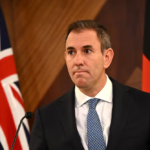Is your budget setting process doomed?
The global economic environment is harsher than ever leaving even established businesses struggling to remain viable. Fergus Neilson says it is important to reduce the risk of failure by applying long-term vision.
Businesses large and small hang by a fragile thread. One-third of the nine global brands that advertised in the Economist’s Christmas Double issue of 1991/92 are no longer with us (Bankers Trust, Arthur Anderson and Swedish Volvo Cars). There were 21 advertisers in the Christmas Double issue of 2011/12.
Extrapolation suggests there will only be 14 survivors in 2032. Of the companies in the ASX S&P Top 100 at January 1990 only 29 were still in the Top 100 at April 2008 . Of these 29, only 22 were still listed in the ASX S&P Top 100 at July 2012.
We have to assume that survival, even over the medium term, is never guaranteed; in fact it may be the exception rather than the rule. Is the writing already on the wall for Nine Entertainment, almost every Australian book publisher and the department store industry?
I have begun to consider the possibility that the standard budget setting process may play a part in this high rate of attrition and irrelevance.
Looking back at my own experience, I am deeply conscious (and embarrassed) that the annual budget setting processes in which I have been involved were almost completely focused on short-term extrapolation from the immediate past. It was all about maintaining trend, controlling costs and edging up the margins. There was never anything about where the businesses might be headed in the long term (or even the medium term). There was never anything substantive about budgeting for new opportunity. There was never a structured exercise involving risk assessment or the need to consider new directions.
Is this what doomed Ansett to immolation? Or Billabong to bankruptcy? And any number of government departments to absorption and demotion?
The costs of individual business failure – and of departmental implosion – in terms of multiplier effects on suppliers and customers, on negative social outcomes and the national balance of trade, are immense. So, ow might the risk of failure be reduced?
Perhaps, as suggested by Port Jackson Partners, board focus should not be on setting month-by-month or quarter-by-quarter activity goals for the next 12 or 24 months. Rather it should be on three things, all of them vital and all of them warranting equal time in budget setting and board attention:
- Defend existing business lines and revenues over the coming 12 to 24 months.
- Identify emerging opportunities in the existing business or service space so as to ensure continued relevance two to five years out.
- Explore viable options and initiatives in areas that may have little apparent connection with current activity, but which may underpin continued survival beyond the five-year horizon (and nominate dollars to allow capture of same).
It is most certainly a case of do or DIE. There must be a calculated step back from the day-to-day. Not only annually, but also at every board meeting through the year at which directors should divide their available time and effort into three equal parts:
- One-third to “defending the figures” – Having tasked the CFO with responsibility for this area, don’t spend the entire board meeting discussing whether or not the “west coast sales force” did or did not meet budget or that the “public interface team” did or did not meet customer service performance standards. Or, for that matter, whether the targeted revenue increment for next year is 4.8 percent or 5.7 percent. That’s what the management group is employed to do. Resist the urge to endlessly second-guess those at the coalface.
- One-third to “identifying emerging opportunity” – Those unprepared for change will always be crushed by it. Change is inevitable. Therefore, every budget setting program and every board meeting should allow rich discussion on “what next?” or “what should we do differently?” or “how can we do what we do better than we do it?” So that in two to five years time the competition will still be trailing a step or two behind.
- One-third to “exploring viable options for the future” – This may even entail deliberate pursuit of buyout, and that is an acceptable position just so long as it is agreed to and worked towards. If it isn’t, then it is vital that attention be paid to what the business or service should look like in five to ten years time, as well as to the succession planning required to get there.
The reality is that at least 20 percent of everything we do, individually or collectively, is just legacy polishing and nothing more. If we are not prepared to seriously consider, each and every business year, the possibility of re-assigning this 20 percent across to new initiatives, to genuine research and development, and to exploratory re-structuring then we should be prepared to join Kodak and Olivetti and Austral Bronze and ABC Learning on the scrap heap of history, and 30,000 federal public servants in enforced retirement.
Fergus Neilson is Co-Founder of The Futures Project. Fergus brings a wide range of business and life skills gathered from a career in the armed forces, investment banking, the United Nations, McKinsey & Company and private equity investment. Always sceptical of solutions imposed ‘top-down’ and increasingly frustrated by the default position that invariably sees cleaning equipment bought in only after the proverbial has hit the fan. Fergus can be contacted at fergus.neilson@thefuturesproject.com
Fergus Neilson has a wide range of business and life skills gathered from a career in the armed forces, investment banking, the United Nations, McKinsey & Company and private equity investment.











